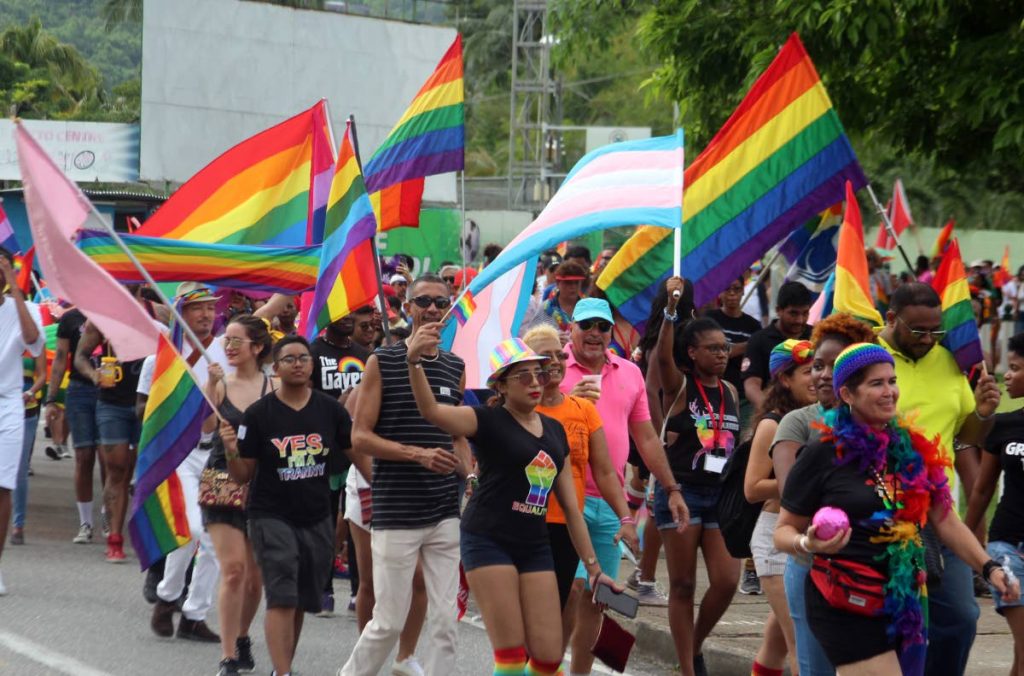The road to Tragarete Road

It wasn’t me. What I thought most fitting to say into every microphone last Saturday was that I had little to do with the historic Pride parade that rainbowed its way along Tragarete Road from Nelson Mandela Park, stopping to do the “Electric Pride” to Marcia Griffiths’s anthem.
The story I wanted to tell was how TT had built an LGBTI movement, which was not smoke-and-mirrors and one face in the media, nor one man taking a case to court. How what swelled me most with pride was to watch a generation of young people imagine something was possible and create it themselves. Young people I annoy with criticisms and politics, but young people I treasure as my future. Cherisse Berkeley and Kennedy Maraj. Josh Ryan and TerryAnn Roy. Jay.
I’d stubbornly resisted the doctrine that decriminalisation and Pride parades were the markers of LGBTI freedom. I certainly never imagined they’d both happen here in TT within a three-and-a-half-month stretch. It isn’t the law itself that is the weapon, it’s the stigma, how it robs children of efficacy and dreams. They grow up believing they aren’t deserving, that the law won’t protect them, that they cannot create safe spaces to celebrate and large up themselves.
Then someone comes along and simply does something others had just not imagined. Or had imagined poignantly, but simply not seen as possible.

Imagination is the thing. And what I heard repeatedly between the music beats and tears along Tragarete Road: a sense of having been able to imagine this, but not imagine it could yet be made real.
I didn’t cry, but I understood the tears. I’d created a Pride celebration—20 years ago actually. Godfrey Sealy had sat at my Brooklyn dining table, there to seek treatment for HTLV-1. I’d assembled other Caribbean LGBTI people to meet this leading activist. We’d all offered prescriptions for work being done towards freedom in TT and the region. And then someone asked: what work are we doing here?
A world-famous Pride parade travelled down Manhattan’s Fifth Avenue every June, and loads of Caribbean people like us went, looked on, cheered and waved. So we did do something; relatively simple—we took a big truck, had it play soca, and put it in the people parade. Caribbean people lost their minds. Disobeyed police to get under barricades. Blew off rendezvous with friends to follow the music. Wining atop the truck, as it rolled past the office where colleagues would gather to watch the parade, decided to stay there, facing that side. And then the truck entered the narrow street where the parade ends and the tall buildings form a canyon and the crowds are thickest, and Who Let the Dogs Out started to play. A big truck (or two) has become a fixture in the New York event.
But we’d never imagined the streets of a Pride parade in a place we could celebrate ourselves as Caribbean. Twenty years later I witnessed Trinbagonians who hadn’t imagined Tragarete Road as a space LGBTI Trinbagonians could celebrate our pride.
It wasn’t only Godfrey I missed as the parade route turned away from the Murray St house he turned into an LGBTI community centre in the 1990s. The story I want to tell is about someone else I think is responsible for what happened Saturday. Someone who won a court judgement. Eleven years ago.
Saturday’s parade ended on the street where, on Emancipation Day afternoon in 2007, a group of us gathered excitedly in an office building. A fat man with a rag thrown over his shoulder pulled a beat-up maxi into the driveway, and he and his lover alit.
Newspapers that July 4 had told Kennty Mitchell’s story, how, as a gay man, he’d taken the state to court over the abuse of an arresting policeman, PC Teasdale, who’d kept him, then 22, naked in a foul Princes Town cell and laughed about his size, and his size. Mitchell won a judgement, and his lawyer asked media, if they reported his sexuality, to withhold his name. Some media did one, others the other. He later did a feature interview, his picture with the signature shoulder-rag in a corner of the paper’s front page, captioned: Give Gays Equal Rights. He was standing up for those who couldn’t, he said.
An ordinary gay man decided he deserved dignity, and won. And we were awestruck. We found him, and that Emancipation, LGBTI people assembled in one room across gender and class, some for the first time. It was the moment I think marked the birth of TT’s LGBTI movement for social change. We made a simple commitment: to move our work beyond health and parties to rights. We started an organisation that failed. But those same people would gather again in June 2009 to form CAISO.
I missed Kennty terribly on Saturday.

Comments
"The road to Tragarete Road"